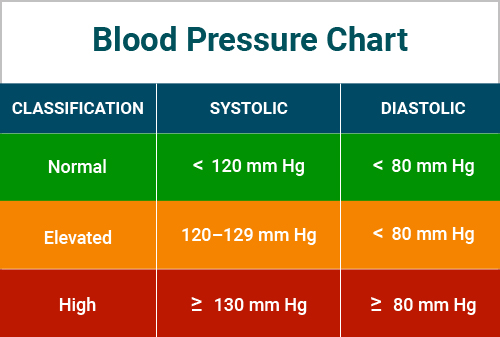What do your circulatory strain numbers mean?
The best way to be aware assuming
you have hypertension (HBP, or hypertension) is to have your circulatory strain
tried. Understanding your outcomes is vital to controlling hypertension.
Solid and unfortunate pulse
ranges
Realize what's viewed as typical,
as suggested by the American Heart Affiliation.
Circulatory strain classes
The five circulatory strain ranges as perceived by the American Heart Affiliation are:
Ordinary
Circulatory strain quantities of
under 120/80 mm Hg are viewed as inside the ordinary reach. On the off chance
that your outcomes fall into this classification, stay with heart-solid propensities
like following a fair eating routine and getting normal activity.
Raised
Raised pulse is when readings
reliably range from 120-129 systolic and under 80 mm Hg diastolic. Individuals
with raised circulatory strain are probably going to foster hypertension except
if steps are taken to control the condition.
Hypertension Stage 1
Hypertension Stage 1 is when
pulse reliably goes from 130-139 systolic or 80-89 mm Hg diastolic. At this
phase of hypertension, specialists are probably going to recommend way of life
changes and may consider adding pulse medicine in light of your gamble of
atherosclerotic cardiovascular illness (ASCVD, for example, respiratory failure
or stroke.
Hypertension Stage 2
Hypertension Stage 2 is when
circulatory strain reliably goes at 140/90 mm Hg or higher. At this phase of
hypertension, specialists are probably going to endorse a mix of circulatory
strain meds and way of life changes.
Hypertensive emergency
This phase of hypertension
requires clinical consideration. Assuming that your circulatory strain readings
unexpectedly surpass 180/120 mm Hg, stand by five minutes and afterward test
your pulse once more. In the event that your readings are still bizarrely high,
contact your PCP right away. You could be encountering a hypertensive
emergency.
In the event that your pulse is
higher than 180/120 mm Hg and you are encountering indications of conceivable
organ harm, for example, chest torment, windedness, back torment,
deadness/shortcoming, change in vision or trouble talking, don't hold on to
check whether your tension descends all alone.
Your pulse numbers and what they
mean
Your circulatory strain is
recorded as two numbers:
Systolic circulatory strain (the
principal number) - demonstrates how much tension your blood is applying
against your vein walls when the heart beats.
Diastolic circulatory strain (the
subsequent number) - demonstrates how much tension your blood is applying
against your course walls while the heart is resting between thumps.
Which number is more significant?
Ordinarily, more consideration is
given to systolic circulatory strain (the primary number) as a significant
gamble factor for cardiovascular sickness for individuals north of 50. In the
vast majority, systolic circulatory strain rises consistently with age because
of the rising firmness of enormous veins, long haul development of plaque and
an expanded occurrence of heart and vascular sickness.
In any case, either a raised
systolic or a raised diastolic circulatory strain perusing might be utilized to
make a conclusion of hypertension. As per late examinations, the gamble of
death from ischemic coronary illness and stroke duplicates with each 20 mm Hg
systolic or 10 mm Hg diastolic increment among individuals from age 40 to 89.
Why circulatory strain is estimated in mm Hg
The shortening mm Hg implies
millimeters of mercury. Mercury was utilized in the principal precise strain
checks and is as yet utilized in medication today as the standard unit of
estimation for pressure.
Gauging your heartbeat as opposed
to checking your circulatory strain
While both indicate wellbeing,
circulatory strain and pulse (beat) are two separate estimations. Find out
about the distinction between pulse and pulse.















No comments:
Post a Comment